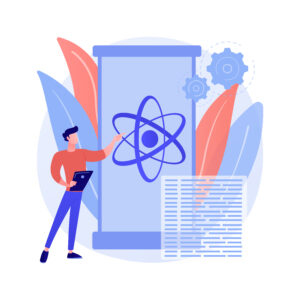In today’s fast-paced business landscape, efficiency and productivity have become paramount for organizations striving to stay competitive. One of the key tools empowering businesses to achieve these objectives is Nintex, a powerful workflow automation platform. In this article, we will explore how Nintex is utilized, its status as a low-code platform, delve into the Nintex Process Platform, and compare it to Power Automate. Through the use of transition words, we aim to provide a clear and logical overview of Nintex’s capabilities.
What is Nintex and its Utilization?
Nintex is a versatile platform that serves as a vital cog in the wheel of modern business operations. It is predominantly used for creating, managing, and automating workflows, thereby enhancing efficiency and productivity. To illustrate, organizations can streamline processes such as document approvals, data integration, and task assignments. The result is reduced manual labor and increased efficiency across various functions within an organization.
Nintex’s approach to workflow automation is decidedly user-friendly. It allows individuals of varying technical proficiency levels to create and deploy workflows without the need for extensive coding. This low-code approach is instrumental in empowering both business users and developers to design and execute workflows efficiently. Transitioning to a digital workplace is simplified, with users being able to navigate Nintex’s intuitive interface with ease.
The Nintex Process Platform: A Comprehensive Solution
While Nintex’s primary function revolves around workflow automation, it is, in fact, a comprehensive platform that encompasses a wide range of capabilities. Beyond mere workflow automation, the Nintex Process Platform offers tools and services for process mapping, document generation, robotic process automation (RPA), and mobile app development.
This integrated approach enables organizations to manage their processes holistically, from the initial design phase to full automation and optimization. The cohesive ecosystem offered by Nintex ensures that processes remain interconnected and easily manageable, making it a top choice for businesses seeking a comprehensive solution for their operational needs.
Nintex vs. Power Automate: A Comparative Analysis
Nintex competes in the workflow automation arena with Power Automate, formerly known as Microsoft Flow. Both tools are potent in their own right, but they cater to different requirements.
Nintex, as discussed, offers a more comprehensive and versatile platform, equipped with a wide array of features and services. Its low-code, user-friendly interface caters to both business users and developers alike. The wide compatibility of Nintex with various applications further solidifies its position as an adaptable solution.
On the other hand, Power Automate, deeply integrated within the Microsoft ecosystem, is an attractive choice for organizations deeply invested in Microsoft products. It seamlessly integrates with Microsoft 365, Dynamics 365, and Azure services. This integration offers a tailored solution for businesses that rely extensively on Microsoft technologies. Power Automate makes transitioning from manual processes to automated workflows within a Microsoft-centric environment exceedingly smooth and efficient.
Unlocking Business Potential with Nintex
The benefits of incorporating Nintex into your organization’s workflow processes are multifaceted. First and foremost, Nintex’s ability to automate routine and repetitive tasks leads to increased productivity. This, in turn, allows employees to focus their valuable time and energy on more strategic and creative tasks that contribute to the growth and innovation of the organization.
Moreover, Nintex is renowned for its flexibility and adaptability. You can customize it to meet the specific needs of various industries and sectors. Today’s business landscape highly values agility and the ability to respond to changing circumstances, making this flexibility vital. Transitioning from traditional, manual processes to automated workflows with Nintex empowers organizations to adapt to the evolving market landscape swiftly.
Nintex also enhances collaboration within an organization. Its intuitive user interface and accessibility to a wide range of users encourage cross-functional teams to collaborate on building, managing, and optimizing workflows. The transparency offered by Nintex ensures that all stakeholders have a clear view of the workflow process, leading to greater communication and improved decision-making.
In addition to these advantages, Nintex’s analytics and reporting capabilities provide invaluable insights into the efficiency of workflows. Organizations can make data-driven decisions to fine-tune and optimize their processes continuously. This adaptability and continuous improvement, bolstered by analytics, contribute to a more agile and competitive organization.
The Role of Transition Words in Your Workflow
As we’ve explored the realm of Nintex, transition words have been essential in guiding the flow of information, drawing connections between ideas, and maintaining the coherence of the article. These transitional devices serve as signposts for the reader, signaling shifts between sections and ideas, allowing for a smoother and more logical reading experience.
Words such as “in addition,” “moreover,” and “furthermore” are essential for introducing additional points and ideas. They create a sense of progression and expansion in the narrative, ensuring that the reader understands the interconnectedness of the topics discussed.
Words like “first,” “second,” and “third” aid in structuring information in a sequence. They help in the organization and categorization of ideas, allowing for a logical progression of thought.
Transitional phrases like “in conclusion” are used to signal the reader that the article is drawing to a close. They provide a sense of closure to the piece, wrapping up the discussion and summarizing the main points.
Incorporating these transition words and phrases into your writing is a valuable practice, not just in blog articles but in any form of professional communication. They enhance clarity, coherence, and the overall readability of your work.
Closing Thoughts
Nintex, as a versatile workflow automation platform, has become an indispensable asset for businesses looking to optimize their operations. Its ability to streamline processes, its low-code approach, and its comprehensive Nintex Process Platform make it a top choice for organizations aiming to enhance efficiency, adaptability, and collaboration.
Whether transitioning from manual processes to automation or choosing between workflow automation tools, the considerations are numerous. Understanding the unique needs of your organization and the specific technology landscape is crucial. Nintex, with its ability to adapt, optimize, and facilitate collaboration, plays a significant role in driving businesses towards a more efficient and productive future.
In the world of modern business, where efficiency is a competitive advantage, Nintex is not just a solution; it’s a catalyst for transformation.








